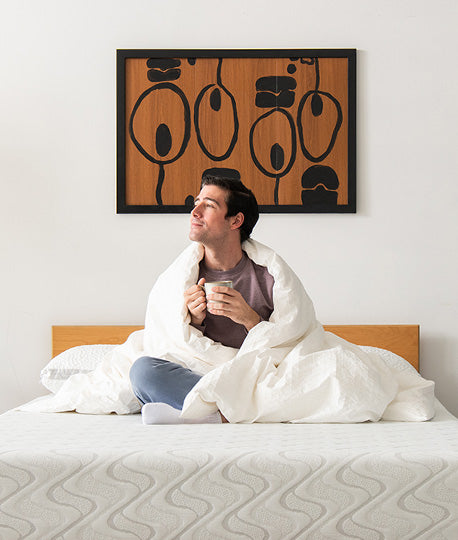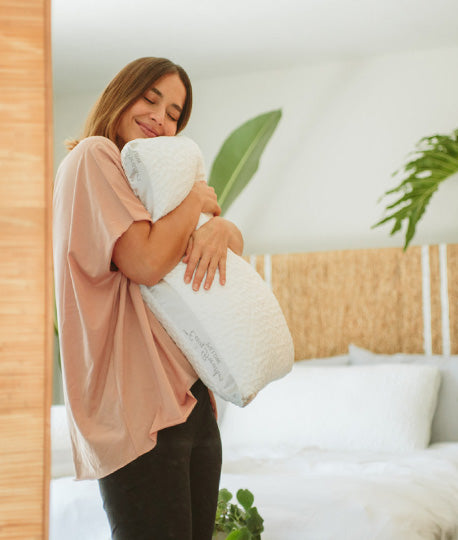Helping Your Infant Sleep Peacefully Through the Night


Most people are quite aware that newborn infants have erratic sleep habits. Newborns sleep in short bursts, commonly sleeping up to 17 hours a day, waking every two to four hours. While most parents who are anticipating the birth of a child prepare for sleepless nights, most underestimate the physical and emotional consequences.
For parents, the inevitable sleep disruptions can be exhausting. During those first few weeks, there isn't too much that can be done to help newborns fall asleep or sleep through the night. However, by the time infants are just a few weeks old, there are a significant number of ways parents can help establish infant sleep cycles and encourage healthy sleep habits.
Establishing the Regulatory System to Govern Sleep Cycles
In adults, our natural 24-hour internal clock, our circadian rhythms, regulate several essential functions, including our sleep cycles. For us, the processes of sleep follow periods of light and darkness. Daylight signals to our brains that it's time to be alert and awake. As daylight fades to dusk, our pineal glands begin producing the natural sleep hormone melatonin.
While newborns have a large pineal gland compared to their brain size, very young infants do not produce enough of this essential sleep hormone to guide sleep, nor do they produce melatonin consistently at night. By the time your infant is two months old, their ability to create this natural sleep hormone improves. After the first six weeks of life, there are several ways parents can encourage melatonin production and help infants establish consistent sleep cycles. Consider the value of the following suggestions.
Take Advantage of Natural Daylight
Darkness triggers the release of sleep-promoting melatonin. You can help your baby differentiate between daytime naps and longer-duration nighttime sleep by putting the baby down for their naps in a well-lit room. By opening blinds and inviting plenty of natural sunlight into your home during the day and dimming artificial lights in the evening, you can encourage the natural production of melatonin that could help establish consistent sleep cycles.Establish a Consistent Sleepy Time Ritual
We are all creatures of habit. Establishing a calming pre-sleep routine can be as beneficial to your infant as it could be for you. By creating a consistent routine at a young age, you help your child learn that sleep is coming soon, a regular part of their day. A soothing 15-minute routine, something as simple as a bath and a lullaby, can help your infant fall asleep easier. Some infant sleep experts recommend developing a softly-spoken phrase that your child will soon learn to associate with sleep.Keep Nocturnal Infant Care Low-Key
Once your infant wakes during the night; you may lose a significant amount of sleep waiting for the sandman to return. To help keep the duration of nocturnal awakenings minimal, experts commonly suggest keeping nighttime feeding and diaper changes as low-key as possible. You may soon find your baby falls asleep much easier if you use subtle lighting in the room and avoid making eye contact during feedings. Direct eye contact with parents can mean an invitation to play and socialize. By minimizing eye contact at night, your infant will not start associating night-time care with a pre-scheduled play date.Begin Sleep Training After Four to Six Months
When infants are still having difficulty sleeping through the night by four to six months of age, many exhausted parents and infant sleep experts advocate various sleep training methods. If you are considering sleep training for your infant, consider discussing the matter with your child's pediatrician. Your doctor may want to rule out the possibility of allergies, reflux disorders, or sleep apnea disrupting sleep patterns. If you decide to proceed with sleep training, discuss various methods with your partner so you can determine the best path forward.
Keep in mind — there are significant differences between helping your infant fall asleep and helping them learn to fall asleep. While there are a considerable number of sleep training methods available to help encourage healthy sleep habits, there is not a straightforward approach that works for every parent, or every child. If one theory proves ineffective, there is no harm in changing your plan. The best sleep routines are those that work best for you and your infant.
Helping Your Infant Develop Healthy Sleep Habits
Some infants start sleeping for longer stretches during the night by the time they are six weeks old, while others continue to wake periodically throughout the night into toddlerhood. Most will reach the "sleeping through the night" milestone by five to six months of age.
If your goal is to help encourage healthy sleep habits at an early age, there are steps you can take to move the process forward. To promote healthy sleep habits for your infant, consider the following suggestions.
Give Newborns the Opportunity to Nap Frequently
During the first two months of life, most babies can't stay awake and alert for much more than two hours at a time. If you are waiting longer than two hours to put your baby down for a nap, your infant could become over-tired and have difficulty falling asleep.Watch for Early Signs of Fatigue
As your infant grows, they will naturally progress to staying awake for longer intervals. As their sleep cycles evolve, it's essential to watch for signs your infant is getting tired. Some babies get fussy, while others may rub their eyes, wipe their nose, or pull on their ears. Watching for signs that your baby is tired will help you tune into their evolving sleep patterns.Resist the Urge to Minimize Daytime Noise
You may be tempted to skip running the dishwasher or listening to your favorite music while the baby sleeps, not wanting to disturb their peaceful slumber. It may not be the best approach. Minimizing daytime noise can make it more difficult for your child to sleep through minor disruptions later in life, or unable to sleep through regular evening conversations with your partner.Recommendations for Infant Sleep Safety
While the American Academy of Pediatrics supports room sharing, the organization does not advocate sharing your bed with your baby. Co-sleeping with an infant increases the risk of sudden infant death syndrome (SIDS) and other sleep-related incidents. For a safe, nurturing sleep environment, consider the following recommendations.
Place Infants on Their Backs
During their first year, infants should be placed on their backs to sleep. If your baby has rolled from their back to their side or stomach on their own, you can leave them in that position if your infant has demonstrated they have the strength and agility to change positions at will.
Provide a Firm Sleep Surface
Never let your infant sleep on a sofa, chair, sheepskin, or cushion. The crib, mattress, and portable equipment you use should meet current safety regulations. It's essential not to use pillows, quilts, bumper pads, or allow plush toys in your child's bed until their first birthday.
Keep Your Infant From Getting Too Warm
Until the age of two to three months, infant temperature regulation processes are still developing. It's important not to place your baby's bed too close to a radiator, a heater, or in the line of direct sunlight. In general, your baby should wear no more than one additional layer than you would wear yourself. A baby that is too warm could have flushed cheeks, damp hair, or a chest that feels hot rather than warm.
Selecting the Ideal Mattress for Your Infant
Some of the many mattresses and mattress protectors available on the marketplace today do not take temperature regulation and infant comfort into consideration. At Nest Bedding, we spent years developing and perfecting the ideal crib mattress.
Our Nest Bedding Organic Crib Mattress combines the temperature-neutral breathability of natural sheep's wool with the water-resistant, anti-bacterial properties of natural coconut coir and a durable coil support system. The outer mattress has a GOTS certified, organic cotton lining. Parents also love our organic mattress protectors and crib sheets.
For affordable luxury mattresses, mattress toppers, bedding, and pillows for your entire family visit Nest Bedding. You'll love the quality and affordability of Nest Bedding products and our 100-night risk-free trial.




